Every modern fashionista is preparing for the beach season. It is important to think over the whole image, not forgetting the little things. To have all the necessary items where to put, you need a roomy bag. It can be bought in a boutique, but it is better to do it yourself, then the accessory will be unique in its own way. How to make a beach bag with your own hands and is it so difficult?
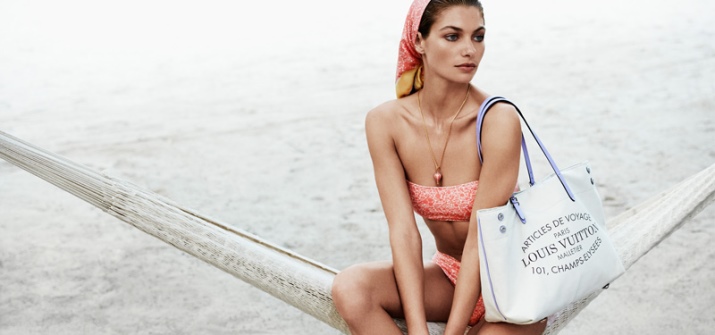
It can be sewn from textile, knitted from yarn and even weaved. However, not everyone is good at crocheting and knitting, but sewing a beach bag, following the instructions of skilled craftswomen, can be done by every woman who has a sewing machine.

What fabric to make?
Today, the choice of material for the bag is so diverse that it will satisfy the most demanding preferences:
- When choosing textiles for a beach model, it is better to give preference to environmental materials. It is important that the textiles are dense, quick-drying, not permeable to sand and retaining moisture. So he will keep in shape.
- Let leather accessories wait for another occasion: here you need lightness and absolute ease
- Ideally, the best textile is one that has a rough texture, but you can use linen, denim, calico.
In addition, it is good if the finished product can be machine washed.
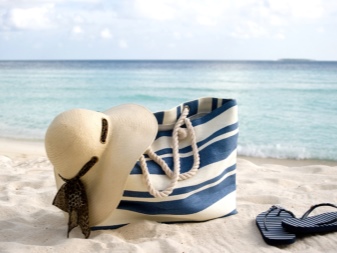
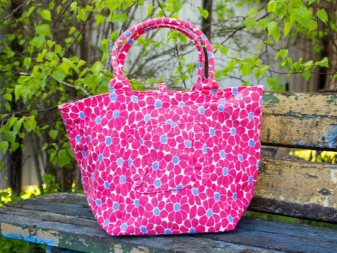
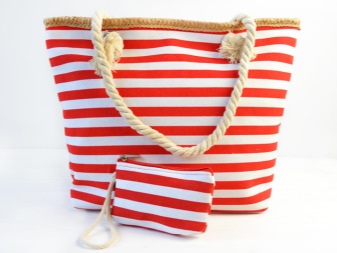

Features of tailoring
A beach bag is the easiest accessory to use. It will not take a lot of time to create it, but the result will please with its beauty. Despite the apparent difficulty in execution, when sewing the product, temporary manual stitches are not needed, fitting at the intermediate stages is excluded.
If you are not sure about the correct creation of the pattern, you can use the finished one: this will reduce the time for sewing and increase the accuracy of the details of the cut.
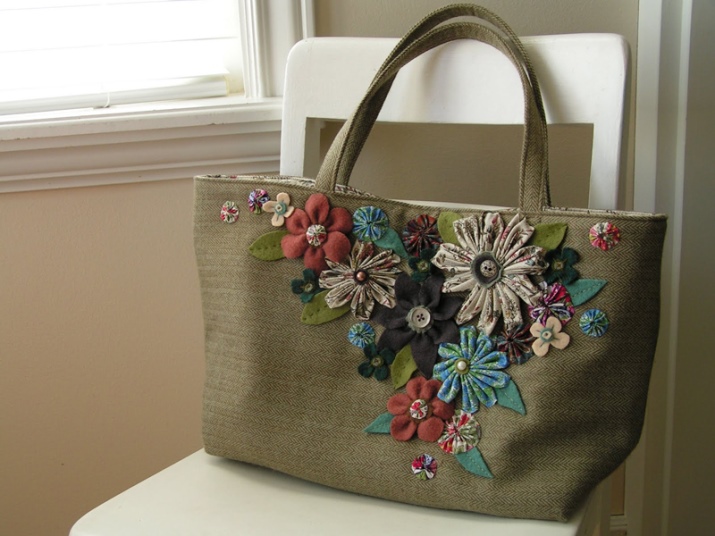
To make the bag look like from a boutique, each stage must be performed flawlessly. When working, it is necessary to use sewing pins, combining the seams, eliminating the influx of fabric. Do not expect that all defects can be straightened out with an iron: this is not so.
All excess should be cut off.

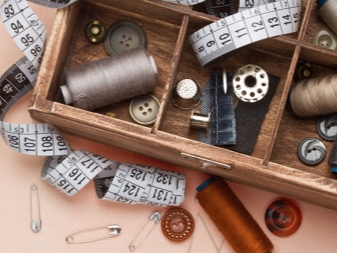
If the fabric is new, it is better to perform decating (to iron the material with steam) before starting work, in order to further eliminate shrinkage. Otherwise, after washing, the finished product may be deformed, which will affect the appearance.

To prevent the product from deforming after washing, it is important to observe the lobar and transverse sides when cutting: the new fabric almost always shrinks in length. Correctly determining the direction is not difficult: the textile stretches somewhat wide.
You should not create a frame made of cardboard: a beach bag can get wet, which will lead to paper sagging. The bottom is best reinforced with a double layer of fabric.
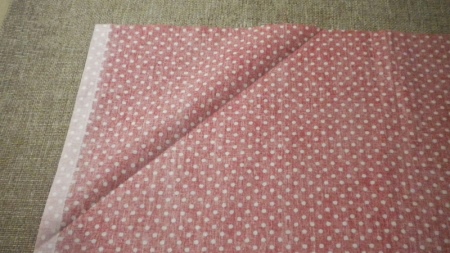
Patterns
In those cases when an interesting style is conceived, it is better to use a ready-made pattern. This will make it easier to calculate material consumption and make work more accurate. Any pattern depends on the design idea.
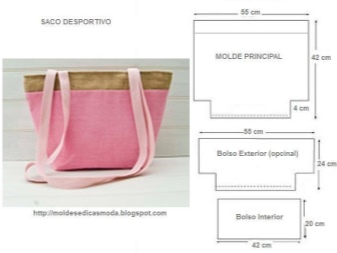
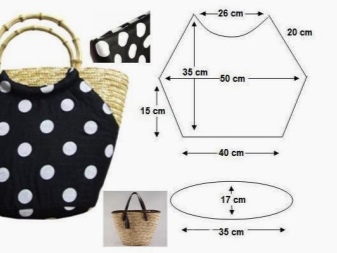
It can be simple, or model, with a mass of decorative details.
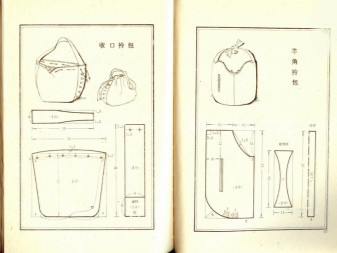

Depending on the chosen option, it differs in shape (in the form of a rectangle, a semicircle, a trapezoid, a square, with a ring, in the style of boho, in the form of a T-shirt, bag-bag).
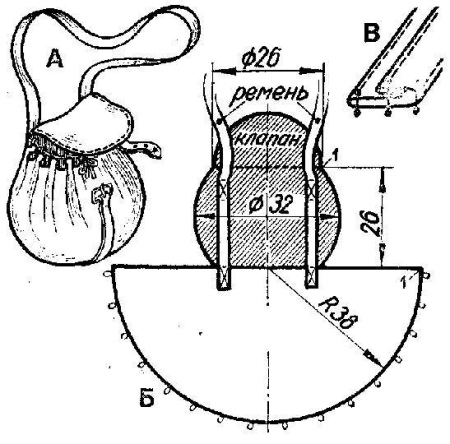
In addition, the models can be flat or voluminous, rigid or soft.
When choosing a pattern, you need to consider textiles: a soft fabric does not hold its shape, even if it is duplicated with an adhesive.
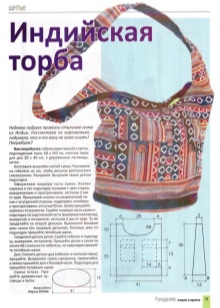
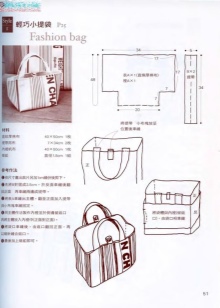
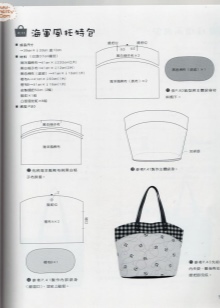
The shape of the accessories is very diverse, and thanks to the professional approach of needlewomen, the piggy bank of patterns is constantly updated. However, it is not necessary to use a ready-made template: you can come up with your own design by making some adjustments to the rough sketch.
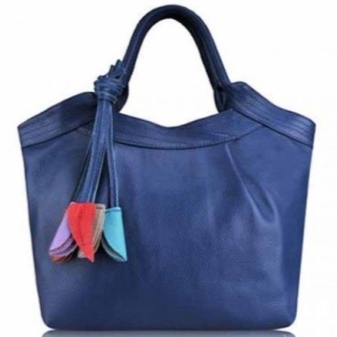
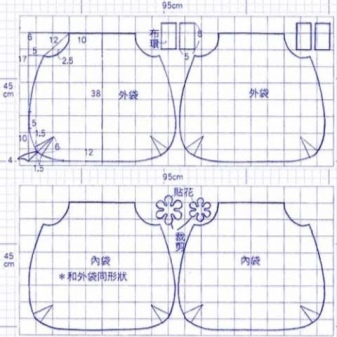
How to sew for the beach?
Choosing a fashionable style, you need to take into account a number of nuances. A beach bag can be an independent accessory or perform several functions at once. In the first case, it will contain all the necessary accessories, in the second it will become an accessory over the shoulder, freeing your hands when walking to the beach.
Such styles are comfortable to wear.

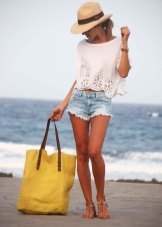


It can be a transforming model from fabric, an umbrella or other material. An interesting option for a beach bag is a rug bag or a plaid bag, which, if necessary, can be transformed into a sunbed.
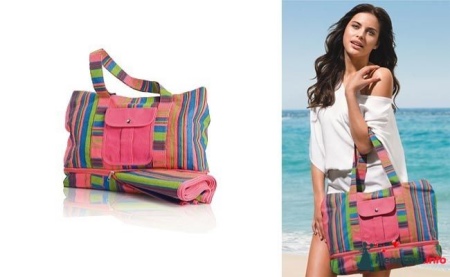
When folded, it will look neat and take up less space than the mat in the bag. Sewing a model depends on the intended functionality.
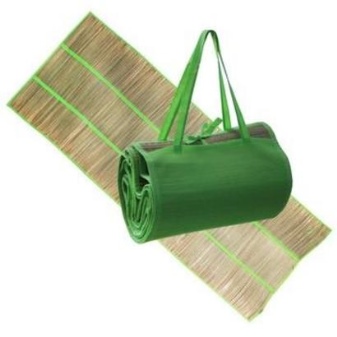
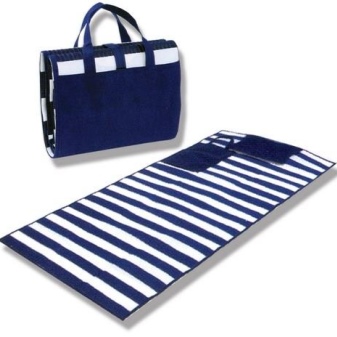
How to decorate?
The design of the beach bag is carried out taking into account the chosen style and taste of the woman. Depending on the type of material and color, sometimes a minimum of decor is needed. For example, if the model is plain and sewn quite simply, you can decorate it with an interesting pattern using special colors.
So it will look fashionable and bright.

There are no restrictions in choosing a topic. It can be a simple classic (strip, cell) or an abstract, geometric motif, floral and urban sketches. It all depends on the creative abilities of the author.
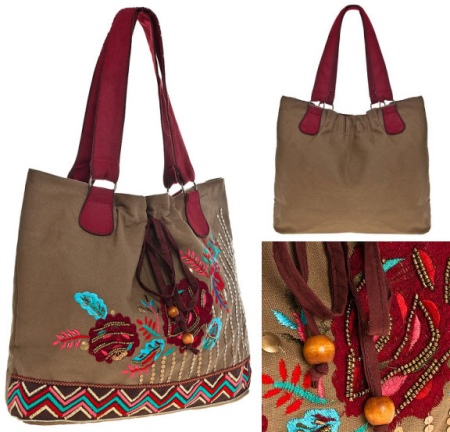
Whoever does not like the patterns on the fabric, you can decorate the product during sewing with applique, embroidery or a combination of several decorative elements. Compositions with flowers and marine attributes will look beautiful. Crocheted blanks that are sewn to the front of the bag also look interesting. In this case, it is important to choose the right material and finish so that they fit together.
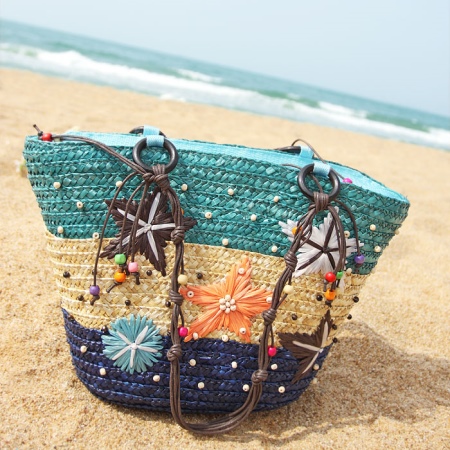
Creation ideas
If you do not want to buy fabric, you can use the forgotten things that are likely to be in the wardrobe. Old jeans - why not? Sometimes it’s enough to trim the legs, sew up the bottom, add handles - and the bag is ready.
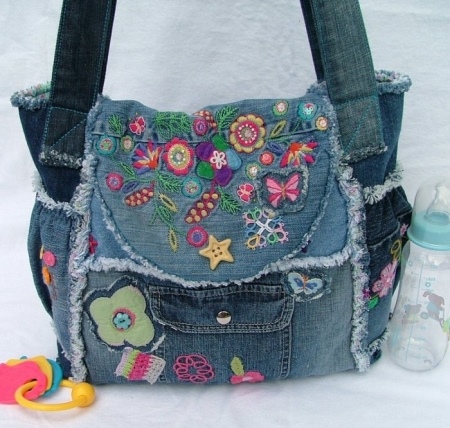
For a creative image, you can realize the option of a la Dolce and Gabbana: a transparent roomy bag, made in the style of minimalism and decorated with a modest decorative braid and reliable handles.
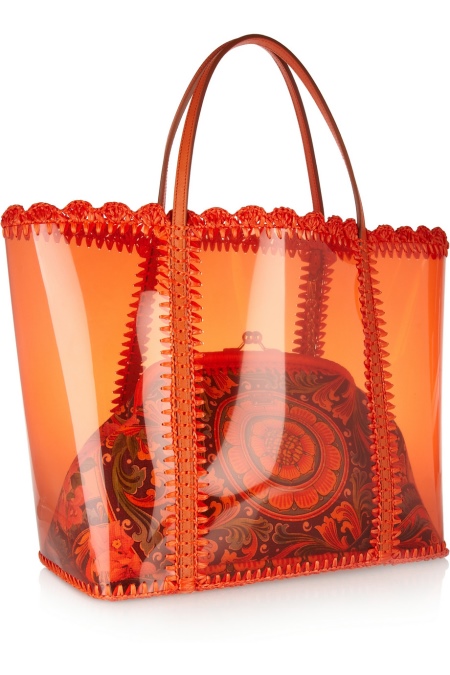
A bit similar, but already in a sporting spirit: a bag of colored mesh, decorated with durable braid and complemented by a pocket. An excellent “breathing” accessory in which the towel dries faster, and everything is always in sight.
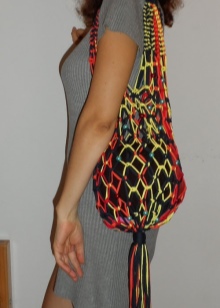

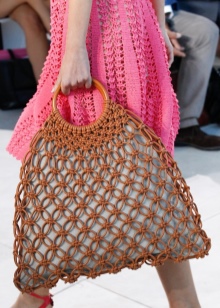
The needlewomen will always have shreds and remnants of material that can be put into action, choosing the color matching the pattern of the swimsuit. So it can be a real beach ensemble.

For those who need a combination of two shades, a patchwork technique is suitable. Patchwork is fun and vibrant. This bag will appeal to many women, it is always unique and distinctive.
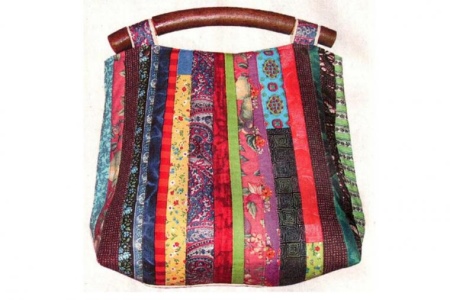
Creative fashionistas will like the idea of tailoring a fashionable bag from a print T-shirt: quickly and originally.
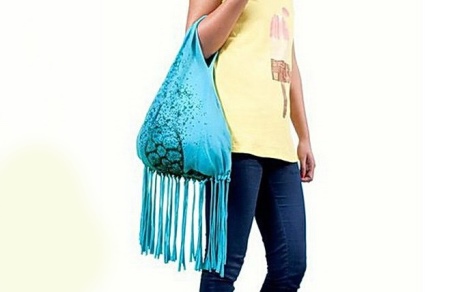
For greater effect, you can cut the bottom of the product into a fringe, knotted. However, there is a nuance: for a bag you need a model from dense knitwear, otherwise the accessory will not look beautiful.
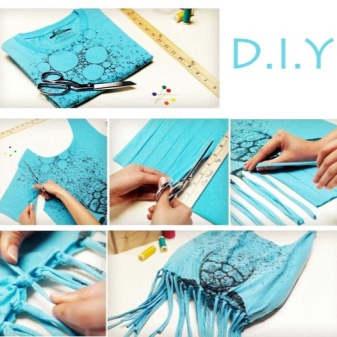
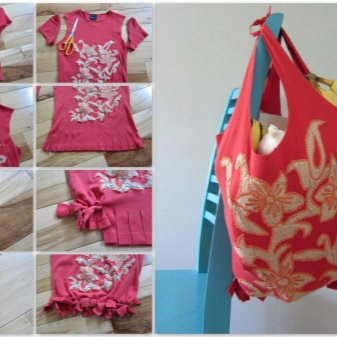
Is there a door mat and a thick, coarse cord? Just some two seams, and the product will look just super! Flat model, quite roomy and comfortable. In such a bag will fit all the necessary beach accessories.
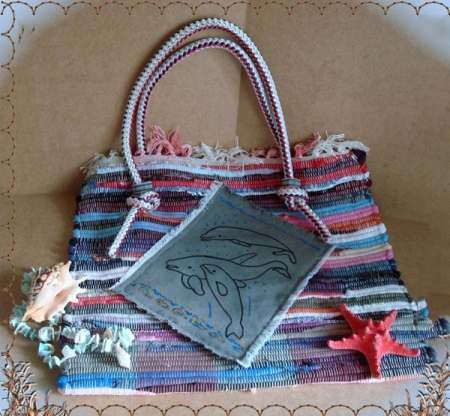
If the wardrobe has an old skirt with frills, it’s even more interesting: combining the bottom of the penultimate frill and sewing on the handles, you get a delicate model that romantic natures will definitely like.
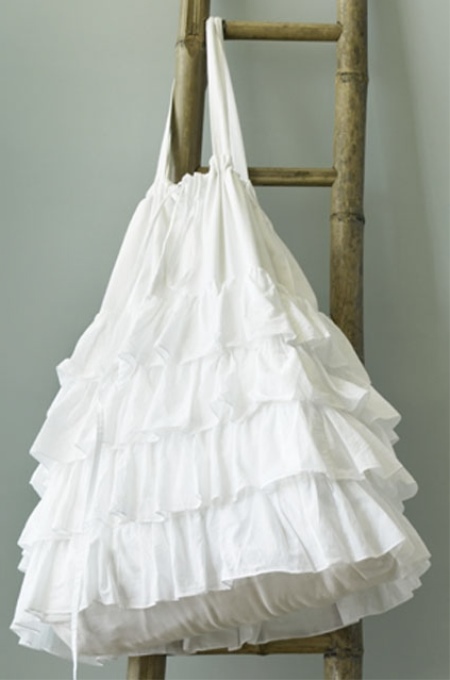
A universal option is a model from a bath towel. Why not? And stylish, and always come in handy if you need to wipe yourself after swimming in the sea.
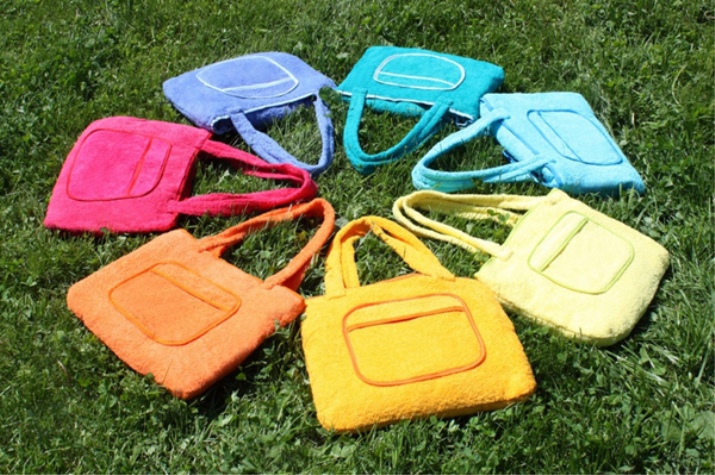
Master Class
Sewing a beach bag yourself is not as difficult as it seems at first glance. To complete the accessory you will need a material of the top of 1.10 m in length and 1.35 m in width and the same amount of finishing (made from natural fabric). Textiles that are too thin and soft do not hold their shape; it is better to use coarse material. The glue will go at least 4 meters, since almost all the details will have to be glued. Threads are needed in tone (for sewing) and contrast (for stitching).
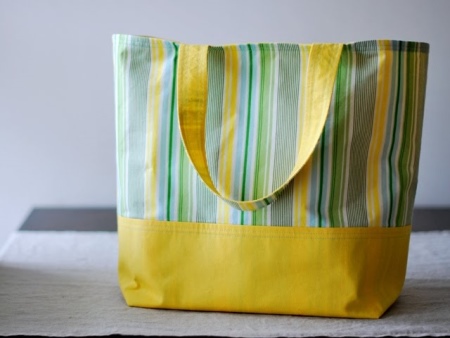
For this, sewing does not need a pattern: you can fold the fabric in half in width and trim the edges to symmetry: when folded, a square with a side of 55 cm is obtained. 5 cm is marked from the length and the resulting strip is cut off. Then each part is cut in a fold: two parts are obtained: 0.5 m (height) x 0.55 m (future bag width) and 5 cm x 55 cm.

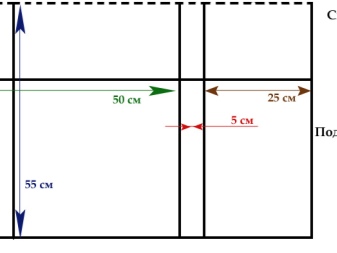
The decoration is cut according to the same principle, but in addition to two large and two small parts, two more workpieces with a size of 25 x 55 cm are cut out (this will be the decor of the sides).
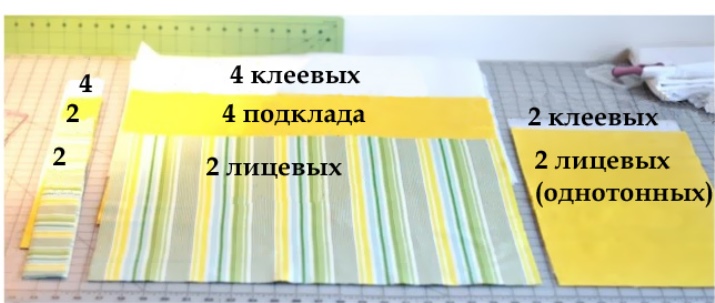
Glue is cut separately for each detail except for the decor details, otherwise the thickness of the textile will be heterogeneous. It should make 4 parts 50 x 55 cm and four 5 x 55 cm.
After all the blanks are cut, they are glued to the non-woven (glue) from the wrong side. If there is excess, glue is trimmed.
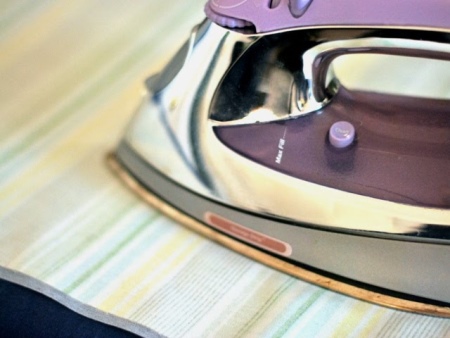
To the base part at a distance of 22 cm from the bottom, the decorative insert from the trim of 25 x 55 cm in size is applied on the wrong side and adjusted at a distance of 1 cm from the edge. Then, the finish is bent on the face, ironed and laid the finishing line with contrasting threads. If the design is intended for double finishing lines, it is advisable to observe this technique in the entire decoration.
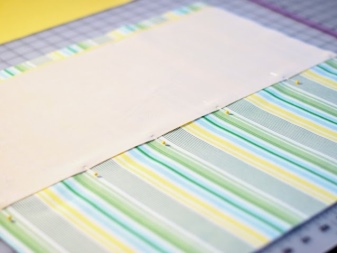
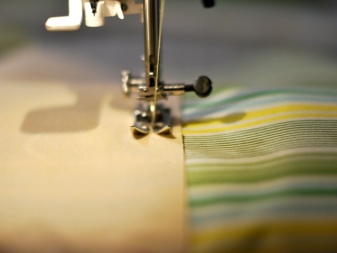
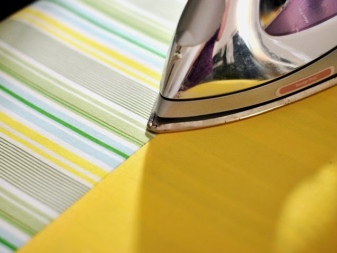
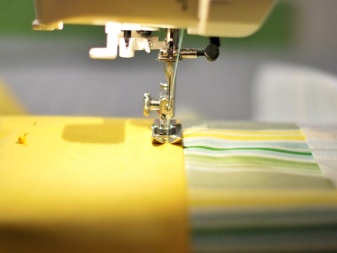
Work must be done carefully so that the general view is not affected. Having sewn the finishing parts, they are checked for symmetry, after which they are folded with the front sides inward, cleaved with pins on the sides and bottom and stitched with a sewing machine. The seam width is 0.8 - 1 cm. You can focus on the presser foot. For greater reliability, the seam is made double.
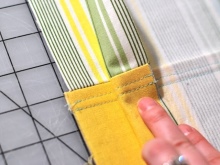
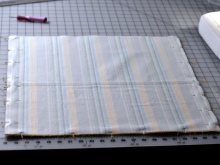
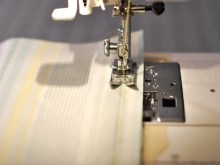
The same is done with the lining of the finishing fabric. However, here the seam width should be larger. It is important that the trim details are 2 to 3 mm smaller than the main material: this is necessary so that the inside of the bag does not look out on the “face” when turned out. So, there will be no excess material inside, and the edging in the upper part is easier to wrap in the right direction.
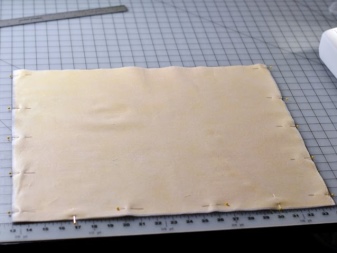
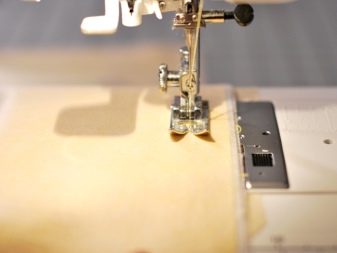
Having done the lines, iron the seams of the base and lining. Then give the product the desired shape.To do this, the fabric at the bottom at the junction of the parts is folded at an angle, while the seams should match. Perpendicular to the seam draw a line with a length of about 16 - 18 cm from one edge to the other.
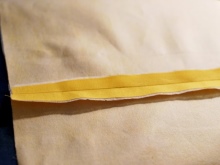

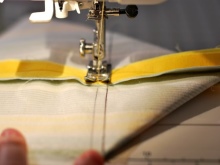
The lower this figure, the flatter the bag will be. A line is drawn along the drawn line, then an allowance of 1 cm is left and all excess is cut off. They also make the corners of the accessory lining, not forgetting that the margin from the edge is always greater, otherwise the lining will be more of the base.

The handle blanks are folded, trimmed, stitched, twisted and ironed. Repeating decor elements, lay a double line along the length. Finished parts are pinned to the top of the base at a distance of 15 cm from the side faces, combining the top allowance and the handle.
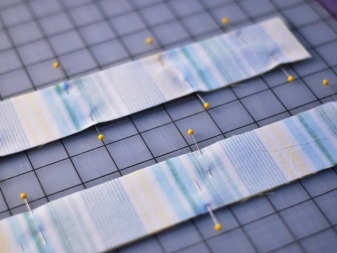
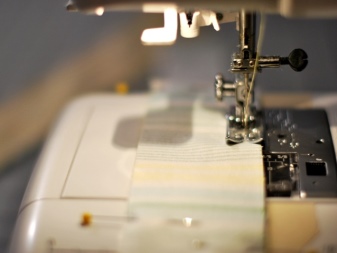
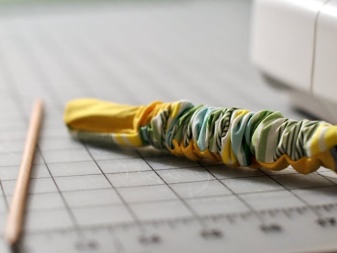
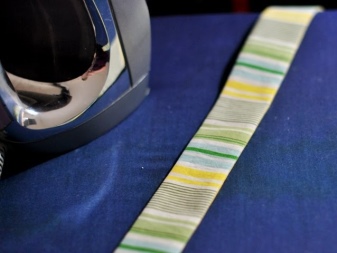
The lining is turned out face-down, put into the base blank and pinned on top, then sew, aligning the seams and not forgetting to leave a small area unstitched. He is needed in order to turn the product.
For durability, you can flash the top twice.

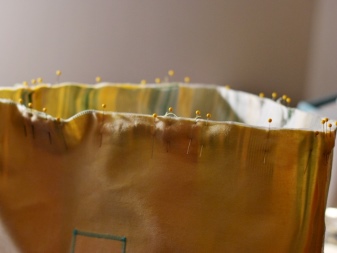
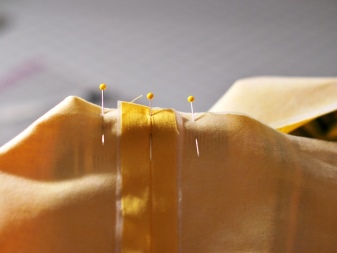

Having turned the bag, it remains to align the top, turn the piping inside out, sew the hole for turning out and fix the upper part with a double finishing stitch. DIY beach bag is ready!
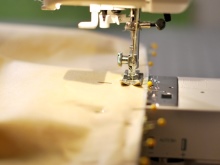
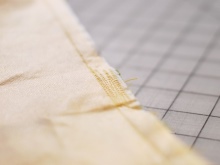
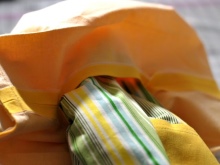

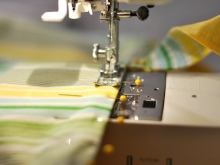
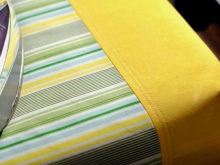
In more detail about how to quickly sew a beach bag, the following video will tell:











